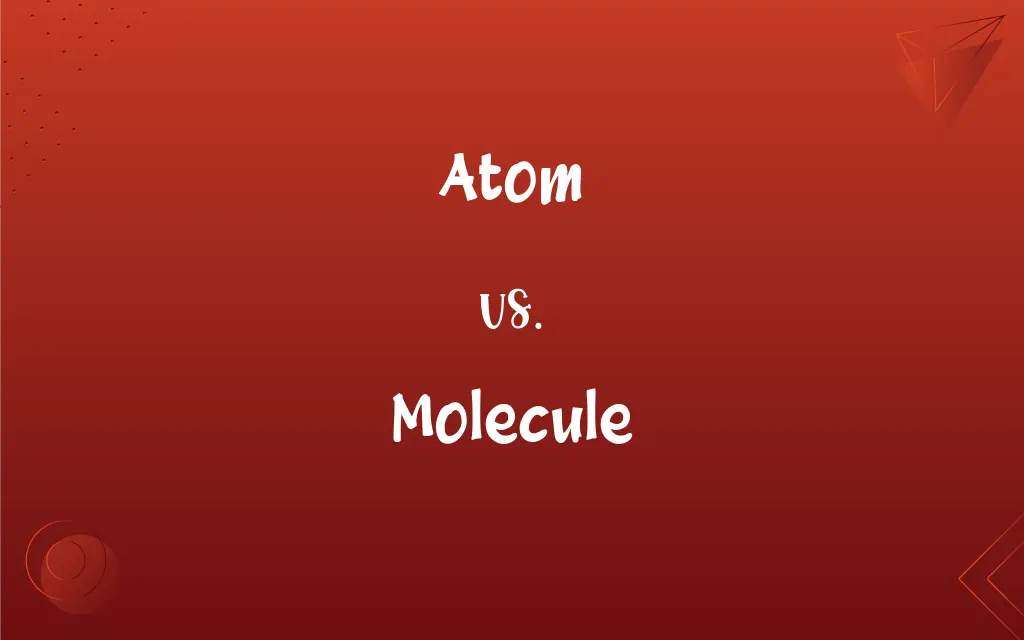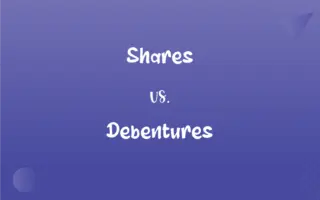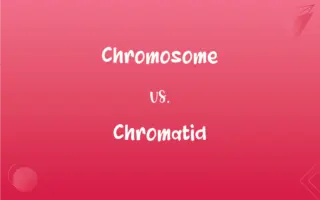Atom vs. Molecule: What's the Difference?
Edited by Janet White || By Harlon Moss || Updated on July 12, 2024
An atom is the smallest unit of an element retaining its properties, while a molecule consists of two or more atoms bonded together.

Key Differences
An atom represents the most basic unit of a chemical element. Atoms maintain the chemical identity of the element they belong to. A molecule, on the other hand, is a combination of two or more atoms, which can be of the same or different elements, bonded together.
The properties of an element are determined by its atoms. The nature and number of subatomic particles (protons, neutrons, and electrons) in an atom dictate its chemical behavior. In contrast, a molecule's properties stem from the ways its constituent atoms are connected and how they interact.
While atoms can exist independently in some cases, like noble gases, they often prefer to bond with other atoms to achieve stability. Molecules come into play here, where atoms form bonds, especially covalent bonds, to combine into molecules, which may exhibit properties different from their constituent atoms.
Atoms are denoted using symbols of elements from the periodic table. For instance, "O" signifies an atom of oxygen.
One should remember that while every molecule is a combination of atoms, not every atom is part of a molecule. Some atoms can exist freely without forming molecules, especially in certain conditions.
ADVERTISEMENT
Comparison Chart
Definition
Smallest unit of an element
Combination of two or more bonded atoms
Constituents
Protons, neutrons, and electrons
Atoms of the same or different elements
Stability
Some are stable alone
Achieved by bonding atoms together
Existence
Can exist independently
Always consists of more than one atom
Example
H2O (water) consists of 2 hydrogen atoms and 1 oxygen atom
Oxygen atom, represented as O, has 8 protons
ADVERTISEMENT
Atom and Molecule Definitions
Atom
An atom is the fundamental unit of a chemical element.
A helium atom remains unreactive due to its filled electron shell.
Molecule
Molecules can be composed of similar or different atoms.
Methane (CH4) is a molecule with one carbon and four hydrogen atoms.
Atom
Atoms are made up of subatomic particles like protons, electrons, and neutrons.
A carbon atom has 6 protons.
Molecule
The atoms in a molecule are held together by chemical bonds.
In a water molecule, hydrogen and oxygen are held together by covalent bonds.
Atom
Atoms possess a nucleus, housing protons and neutrons, surrounded by electrons.
Electrons orbit the nucleus of an atom in specific shells or orbitals.
Molecule
A molecule is formed when two or more atoms bond together.
Oxygen gas (O2) is a molecule made of two oxygen atoms.
Atom
Atoms of the same element with different neutrons are called isotopes.
Carbon-12 and Carbon-14 are isotopes of the carbon atom.
Molecule
The physical and chemical properties of a molecule differ from its constituent atoms.
Two hydrogen atoms and one oxygen atom combine to form a water molecule, which has properties distinct from both hydrogen and oxygen.
Atom
Different atoms have varying numbers of protons, defining the atomic number.
Hydrogen has only one proton in its atom.
Molecule
Molecules can vary in size, from simple diatomic ones to complex macromolecules.
DNA is a large molecule containing billions of atoms.
Atom
A part or particle considered to be an irreducible constituent of a specified system.
Molecule
The smallest particle of a substance that retains the chemical and physical properties of the substance and is composed of two or more atoms; a group of like or different atoms held together by chemical forces.
Atom
The irreducible, indestructible material unit postulated by ancient atomism.
Molecule
A small particle; a tiny bit.
Atom
An extremely small part, quantity, or amount.
Molecule
(chemistry) The smallest particle of a specific element or compound that retains the chemical properties of that element or compound; two or more atoms held together by chemical bonds.
Hydrogen chloride is a diatomic molecule, consisting of a hydrogen atom and a chlorine atom.
FAQs
What is an atom?
An atom is the smallest unit of a chemical element that retains its chemical properties.
How does the size of a molecule get determined?
It's determined by the number and arrangement of its constituent atoms.
Can atoms exist freely in nature?
Some atoms, like noble gases, can exist freely, but many prefer to bond with others.
Can a molecule be made of atoms from different elements?
Yes, for instance, water is made of hydrogen and oxygen atoms.
What is a diatomic molecule?
A diatomic molecule consists of two atoms, like oxygen (O2) or hydrogen (H2).
How many atoms are in a molecule of water?
A water molecule (H2O) has three atoms: two hydrogen and one oxygen.
Why do atoms form molecules?
Atoms form molecules to achieve greater stability, often by filling their electron shells.
Are the properties of a molecule always similar to its constituent atoms?
No, a molecule often exhibits properties different from its constituent atoms.
What defines a molecule?
A molecule is formed when two or more atoms bond together.
Are atoms bigger than molecules?
No, atoms are the building blocks of molecules, so molecules can be larger than individual atoms.
Can molecules be seen with the naked eye?
No, individual molecules are too small to be seen without specialized equipment.
What holds the atoms together in a molecule?
Atoms in a molecule are held together by chemical bonds, such as covalent or ionic bonds.
What is the smallest atom?
Hydrogen, with just one proton, is considered the smallest atom.
Do all atoms form molecules?
No, while many atoms bond to form molecules, some like noble gases remain largely unreactive and don't form molecules under normal conditions.
What's the main force that holds atoms together in a molecule?
Chemical bonds, like covalent or ionic bonds, hold atoms together in a molecule.
Is every atom part of a molecule?
No, not every atom is part of a molecule; some can exist independently.
How are atoms and molecules related to elements and compounds?
Elements consist of one type of atom, while compounds consist of molecules made from different types of atoms.
About Author
Written by
Harlon MossHarlon is a seasoned quality moderator and accomplished content writer for Difference Wiki. An alumnus of the prestigious University of California, he earned his degree in Computer Science. Leveraging his academic background, Harlon brings a meticulous and informed perspective to his work, ensuring content accuracy and excellence.
Edited by
Janet WhiteJanet White has been an esteemed writer and blogger for Difference Wiki. Holding a Master's degree in Science and Medical Journalism from the prestigious Boston University, she has consistently demonstrated her expertise and passion for her field. When she's not immersed in her work, Janet relishes her time exercising, delving into a good book, and cherishing moments with friends and family.
































































